Imagine waking up one morning to find all your important files—documents, business records, and client data—completely locked. A message pops up on your screen demanding payment in Bitcoin to restore access. Panic sets in. If you don’t pay, you risk losing everything. This is ransomware, one of the most devastating cyber threats today. In Kenya, businesses and individuals are losing millions to these attacks. But what exactly is ransomware, and more importantly, how can you protect yourself?
Let’s dive in.

What is Ransomware?
Ransomware is a type of malicious software (malware) that locks or encrypts your files, making them inaccessible. The hacker then demands a ransom payment in exchange for a decryption key.
But here’s the problem: even if you pay, there’s no guarantee you’ll get your files back. Many victims lose their money AND their data.
Ransomware spreads through:
-
Phishing emails with infected attachments.
-
Fake software updates that secretly install malware.
-
Compromised websites that download ransomware when you visit them.
-
Infected USB drives or external storage devices.
This type of attack doesn’t just affect individuals—it’s crippling businesses, hospitals, and even government institutions worldwide.
Real Cases of Ransomware Attacks in Kenya
Kenyan businesses are increasingly becoming targets of cybercriminals using ransomware. Here are a few cases:
-
Major hospitals in Nairobi have reported ransomware attacks, locking critical patient data and demanding ransom in Bitcoin.
-
A Nairobi law firm lost access to client case files after falling victim to a phishing attack.
-
An M-Pesa agent network was hit with ransomware, disrupting mobile money transactions for hours.
Cybercriminals don’t care whether you’re an individual or a big company—if you have valuable data, you’re a target.

How to Protect Yourself from Ransomware
Preventing a ransomware attack is far better than trying to recover from one. Here’s how you can stay safe:
1. Backup Your Data—Regularly
-
Use external hard drives or cloud storage to keep copies of your files.
-
Ensure backups are not connected to your main computer (ransomware can infect connected drives).
-
Services like Google Drive, OneDrive, and Dropbox offer cloud backup solutions.
2. Don’t Click Suspicious Links or Attachments
-
If you receive an email from an unknown sender, don’t open any attachments or links.
-
Cybercriminals use fake invoices, job offers, or even KRA tax notices to trick people.
3. Keep Software and Systems Updated
-
Hackers exploit outdated software to deliver ransomware.
-
Always update Windows, Mac, and any software you use.
4. Install Strong Cybersecurity Software
-
Use reputable antivirus and anti-malware software to detect and block ransomware.
-
Enable firewalls to filter out malicious traffic.
5. Avoid Public WiFi for Sensitive Transactions
-
Free WiFi can be a hacker’s playground.
-
If you must use public WiFi, avoid accessing banking accounts or business files.
6. Disable Macros in Microsoft Office
-
Ransomware often spreads through infected Word and Excel documents.
-
Disable macros unless you’re sure the document is from a trusted source.
7. Train Your Employees and Family Members
-
Cybercriminals love exploiting human error.
-
Teach your employees and family members how to recognize phishing emails and avoid suspicious downloads.
What to Do If You’re Hit by Ransomware
If ransomware locks your files, don’t panic. Here’s what you should do:
1. Disconnect from the Internet Immediately
-
This prevents the ransomware from spreading to other devices.
2. Don’t Pay the Ransom!
-
There’s no guarantee that hackers will unlock your files.
-
Paying encourages more attacks on other victims.
3. Try Free Decryption Tools
-
Cybersecurity experts have cracked some of these strains.
-
Check websites like No More Ransom (nomoreransom.org) for decryption tools.
4. Restore from Backup
-
If you have recent backups, you can wipe your system and restore your data.
5. Report the Attack
-
Inform the Communications Authority of Kenya (CA) or your IT department if your business is affected.
Final Thoughts: Stay One Step Ahead
Ransomware is a growing cyber threat, but you don’t have to be a victim. By taking proactive steps—backing up your data, avoiding phishing scams, and using cybersecurity tools—you can protect yourself and your business.
Hackers are always evolving, but with the right knowledge and preparation, you can stay one step ahead.
Need cybersecurity solutions for your business? We’ve got you covered.
📞 Call us: +254726572527
📧 Email: developers@techrahisi.co.ke
🌍 Visit: techrahisi.co.ke






















